DIY Aquatic Animals Crafts for Kids
Welcome to the exciting world of DIY aquatic animal crafts for kids! If you're looking for a way to keep your little ones engaged while also sparking their creativity, you've come to the right place. Crafting isn't just about creating beautiful pieces of art; it's a wonderful opportunity for children to explore their imagination and learn about the fascinating creatures that inhabit our oceans. With a splash of color and a sprinkle of creativity, your kids can transform everyday materials into vibrant aquatic animals that will surely impress! So, grab your supplies and let’s dive into some fun projects that will not only entertain but also educate your children about marine life.
These aquatic animal crafts are designed to be fun and straightforward, making them perfect for kids of all ages. Whether it's a rainy day or a weekend project, these activities will keep your children busy while enhancing their fine motor skills and artistic abilities. Imagine the joy on their faces as they create their very own fish, jellyfish, or even a majestic dolphin! Each project encourages hands-on learning and provides an excellent platform for discussing marine biology and environmental conservation.
Throughout this article, we'll explore various crafting ideas that utilize both recycled materials and simple supplies. From plastic bottle fish to cardboard sea creatures, there’s something for everyone! Plus, we’ll incorporate educational elements that will help your kids understand the importance of protecting our oceans and the creatures that call them home. So, are you ready to embark on this creative ocean adventure? Let’s get started!
Crafting offers numerous developmental benefits for children, including enhancing fine motor skills, fostering creativity, and improving focus. Engaging in hands-on activities also encourages self-expression and boosts confidence in their artistic abilities. As children manipulate materials, they strengthen their hand-eye coordination and dexterity, which are essential skills for their overall development. Moreover, the process of creating something from scratch can be incredibly rewarding, giving them a sense of accomplishment that can translate into other areas of their lives.
Gathering the right materials is essential for successful aquatic animal crafts. Common supplies include:
- Paper (construction paper, cardstock, etc.)
- Scissors
- Glue
- Paint (watercolors, acrylics, etc.)
- Recycled items (plastic bottles, cardboard, old magazines)
Having these materials on hand will ensure a smooth crafting experience. Remember, the more creative you can get with your materials, the more unique your aquatic animals will be!
Using recycled materials can make crafting both eco-friendly and budget-friendly. Not only does it reduce waste, but it also teaches kids the importance of recycling and caring for our environment. Here are a couple of fun projects that utilize items like plastic bottles and cardboard:
Transforming plastic bottles into colorful fish is a fun project that combines creativity with environmental awareness. Kids can paint and decorate their creations using vibrant colors and patterns. This hands-on activity not only results in a unique piece of art but also promotes discussions about reducing plastic waste and protecting marine life. Imagine a school of colorful fish made from recycled materials swimming in your home!
Cardboard offers endless possibilities for creating sea creatures. With just a few simple steps, kids can craft anything from starfish to octopuses. Using scissors, glue, and their imagination, they can cut out shapes, paint them, and even add googly eyes for a fun touch. This section provides step-by-step instructions for making various aquatic animals, helping kids explore their imagination while recycling materials.
Paper is a versatile material for crafting aquatic animals. Simple projects like origami fish and paper plate jellyfish are perfect for younger children to develop their crafting skills while having fun. Not only do these projects encourage fine motor skills, but they also allow for creativity as kids can choose their colors and designs. Plus, they can proudly display their creations at home or share them with friends!
Crafting can be an educational experience. Integrating lessons about marine biology and ocean conservation into crafting activities makes them both fun and informative for children. As they create, you can share interesting facts about the animals they are making, fostering a deeper understanding and appreciation for marine life.
While crafting, kids can learn interesting facts about different marine animals. For example, did you know that clownfish can change their gender? Or that some jellyfish can live for thousands of years? Incorporating these fun facts into your crafting sessions will enhance the educational aspect of the experience and spark curiosity about the ocean.
Teaching children about ocean conservation through crafts can foster a sense of responsibility. Discussing the impact of pollution on marine life while crafting can lead to meaningful conversations about how they can help protect our oceans. Encouraging them to use recycled materials not only makes crafting more sustainable but also instills values of environmental stewardship.
Displaying crafted aquatic animals is a wonderful way for kids to share their work. Whether it’s hanging their creations on the fridge, creating a gallery wall in their room, or showcasing them at school, it encourages pride in their artistic accomplishments. Consider setting up a mini-exhibit where kids can invite friends and family to view their masterpieces. This not only boosts their confidence but also celebrates their creativity!
Q: What age group is suitable for these crafting projects?
A: These projects are suitable for children of various ages, with some activities tailored for younger kids and others for older children. Always supervise younger kids with scissors and paint.
Q: Can these crafts be done outdoors?
A: Absolutely! Crafting outdoors can be a fun way to enjoy nature while being creative. Just make sure to have a designated area for supplies to avoid mess.
Q: How can I incorporate more learning into these crafts?
A: You can integrate learning by discussing marine biology facts, ocean conservation, and the importance of recycling while crafting. Making it a storytime session can also enhance their learning experience.
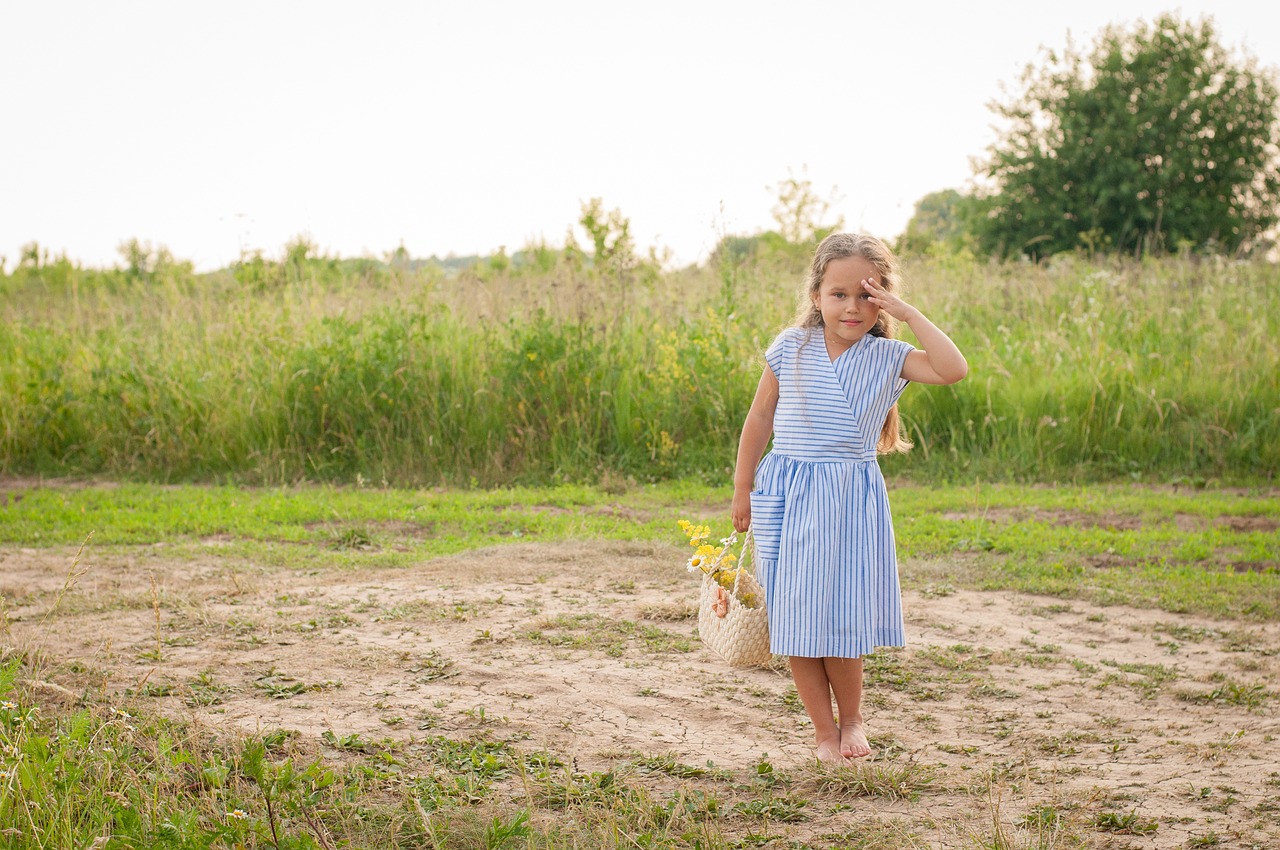
Benefits of Crafting for Kids
Crafting is more than just a fun way to pass the time; it's a treasure trove of benefits for children! When kids engage in crafting activities, they not only unleash their creativity but also develop essential skills that will serve them well throughout their lives. Think of crafting as a workout for the brain and body, where each project is a new exercise that enhances various abilities. For instance, as children cut, glue, and paint, they improve their fine motor skills, which are crucial for tasks like writing and buttoning shirts.
But that's just the tip of the iceberg! Crafting also fosters a sense of creativity that can lead to innovative thinking in other areas of life. When kids are allowed to express themselves through art, they learn to think outside the box, which is a skill that can be applied in school and beyond. Moreover, the act of creating something with their own hands can significantly boost their self-esteem. Each completed project is a testament to their abilities, giving them a sense of accomplishment that they can carry into future endeavors.
Another fantastic aspect of crafting is its ability to improve focus and concentration. In today's fast-paced world, many children struggle to stay engaged with one task for an extended period. Crafting requires attention to detail and patience, helping kids practice these vital skills in a fun and engaging way. They learn to follow instructions and see a project through from start to finish, which can translate into better academic performance.
Additionally, crafting can serve as a wonderful social activity. Whether working on a project with siblings, friends, or parents, crafting encourages collaboration and communication. Kids learn to share ideas, take turns, and provide constructive feedback, all of which are essential social skills. So, the next time you see your child with scissors and glue, remember that they are not just making a mess; they are building a foundation for a variety of important life skills!
To summarize, here are some key benefits of crafting for kids:
- Enhances fine motor skills
- Fosters creativity
- Boosts self-esteem
- Improves focus and concentration
- Encourages social interaction
So, as you dive into these aquatic animal crafts, remember that each moment spent crafting is a step toward your child's development. Not only will they create beautiful pieces of art, but they'll also be gaining invaluable skills that will last a lifetime!

Materials Needed
When diving into the world of aquatic animal crafts, having the right materials at your fingertips can make all the difference. The beauty of crafting is that you don't need a treasure chest full of supplies; often, you can create stunning pieces with just a few common items. Here’s a quick rundown of what you might need:
First and foremost, paper is a staple in any crafting session. Whether it’s construction paper for vibrant sea creatures or plain paper for origami, having a variety of colors can spark creativity. Next, you’ll want some scissors—safety scissors for younger kids and sharper ones for older children who are ready to take on more complex cuts. Glue is another essential; you’ll be using it to stick pieces together, so having a good quality glue stick or liquid glue is crucial.
Additionally, paint can be a fantastic way to add color and personality to your creations. Watercolors, acrylics, or even finger paints can be used to decorate your aquatic animals. Don’t forget about brushes and sponges for different painting techniques! For those who love texture, consider using recycled items like plastic bottles, cardboard, and old magazines. These can be transformed into unique crafts while also teaching kids the importance of recycling.
To help visualize the materials needed, here’s a simple table:
| Material | Purpose |
|---|---|
| Paper | For creating various aquatic animal shapes and designs. |
| Scissors | To cut out shapes and details. |
| Glue | To adhere pieces together. |
| Paint | To decorate and add color to crafts. |
| Recycled Items | For eco-friendly crafting options. |
With these materials gathered, you're all set to embark on an exciting crafting adventure! Remember, the goal is to let your imagination swim free. Whether you're making a colorful fish from a plastic bottle or a jellyfish from a paper plate, the most important thing is to have fun and enjoy the process of creating something unique.
Q: What age group is suitable for these aquatic crafts?
A: These crafting activities are perfect for children aged 4 and up, with varying complexity to suit different skill levels.
Q: Can we use other materials aside from those listed?
A: Absolutely! Feel free to get creative and use whatever materials you have on hand. Crafting is all about imagination!
Q: How can I ensure safety while crafting?
A: Always supervise young children, especially when using scissors or glue. Opt for safety scissors for younger kids and non-toxic supplies.
Q: What if my child doesn’t know what to make?
A: Encourage them to think about their favorite marine animals or even let them explore online for inspiration. Sometimes, a simple prompt can ignite their creativity!
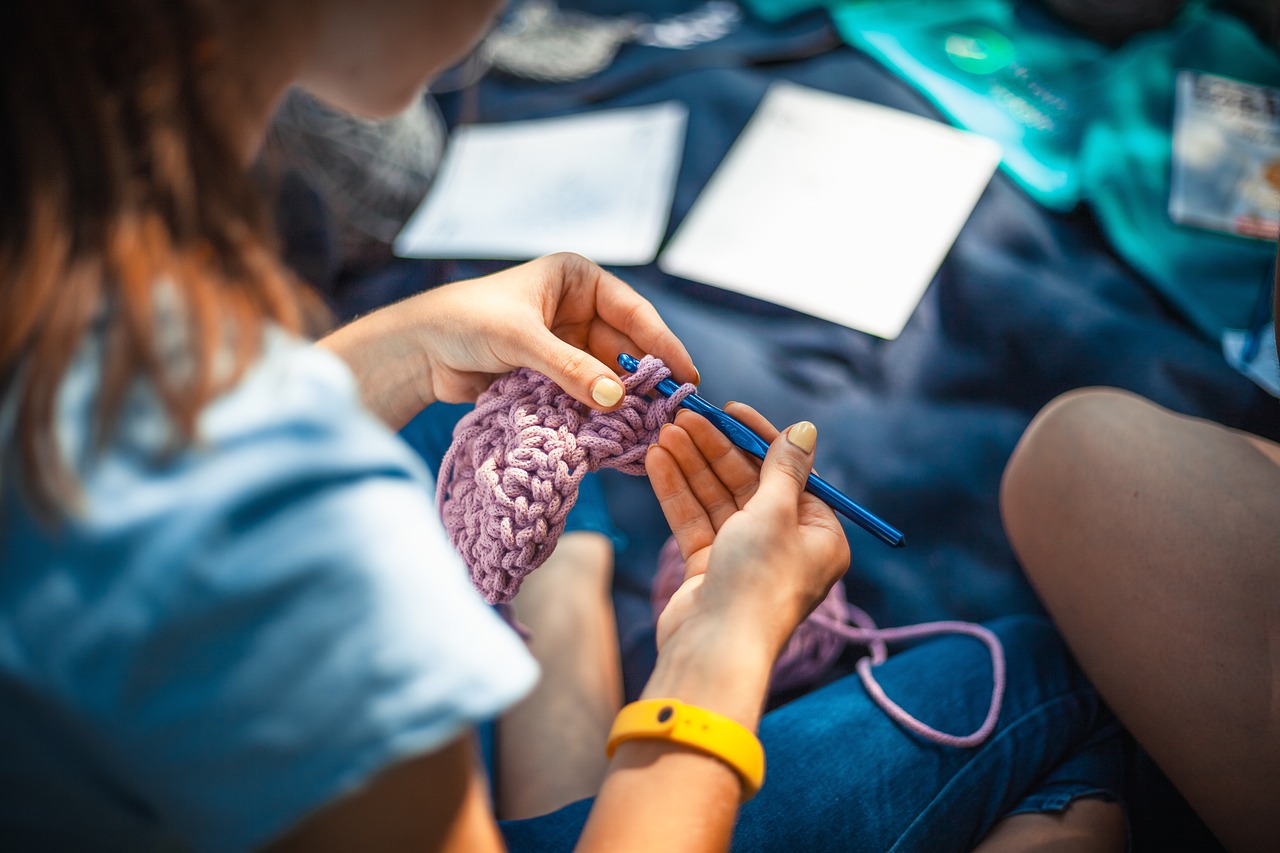
Recycled Craft Ideas
When it comes to crafting, why not make it a double whammy by being creative and environmentally friendly at the same time? are not only a great way to keep kids entertained, but they also instill a sense of responsibility towards our planet. Imagine transforming everyday waste into something beautiful and fun! From plastic bottles to old magazines, the possibilities are endless. Let’s dive into some exciting projects that will spark creativity and teach kids about the importance of recycling.
One of the most exciting projects is creating plastic bottle fish. This craft is as simple as it is fun! All you need are some empty plastic bottles, paint, and a few decorative items like glitter or googly eyes. Kids can unleash their creativity by painting the bottles in bright colors and adding unique designs. Not only do they end up with a colorful fish, but they also learn about the impact of plastic waste on our oceans. It’s a fantastic way to combine art with environmental education!
Next up, we have cardboard sea creatures. Cardboard is a versatile and readily available material that can be transformed into a plethora of aquatic animals. With just a few simple steps, children can create everything from whimsical octopuses to majestic whales. Start by cutting out shapes from the cardboard and then let the kids paint and decorate them. This activity not only encourages imagination but also helps develop fine motor skills as they cut, glue, and paint their creations. Plus, it’s a fun way to discuss how cardboard can be recycled and reused, making it a perfect addition to your crafting session.
To give you a better idea of how these projects can be executed, here’s a quick comparison table:
| Craft Idea | Materials Needed | Learning Outcome |
|---|---|---|
| Plastic Bottle Fish | Plastic bottles, paint, decorative items | Understanding plastic waste and marine life |
| Cardboard Sea Creatures | Cardboard, scissors, paint, glue | Imagination, fine motor skills, recycling knowledge |
By engaging in these recycled craft projects, children not only have a blast but also learn valuable lessons about sustainability and creativity. So, gather those recyclable materials lying around your home, roll up your sleeves, and get ready to craft some incredible aquatic animals!
Q1: What age group is suitable for these recycled craft ideas?
A1: These craft projects are ideal for children aged 5 and up, though younger children can participate with adult supervision.
Q2: How can I encourage my child to be more creative while crafting?
A2: Provide various materials, let them experiment, and refrain from giving too much direction. The goal is to let their imagination run wild!
Q3: What should I do with the finished crafts?
A3: You can display them at home, give them as gifts, or even organize a mini-exhibition for family and friends to appreciate the kids' hard work.
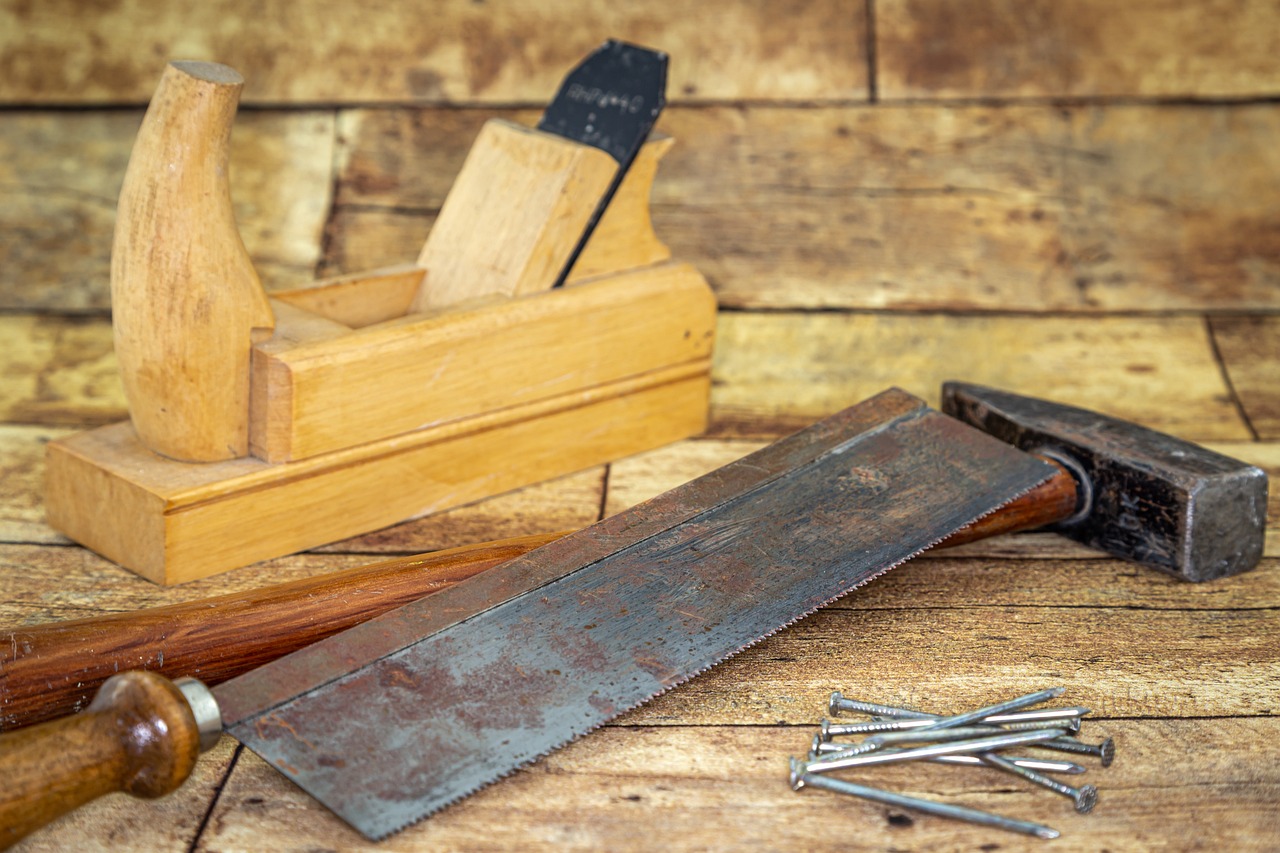
Plastic Bottle Fish
Transforming plastic bottles into colorful fish is not just a fun project, but it also serves as an excellent way to teach kids about recycling and environmental consciousness. Imagine diving into the ocean and discovering vibrant schools of fish, each one unique and bursting with color. Now, what if your kids could replicate that joy at home using materials that would otherwise end up in the trash? This project allows them to express their creativity while learning the importance of reducing waste.
To get started, gather a few empty plastic bottles. Depending on the size of the fish you want to create, you can use anything from small water bottles to larger soda bottles. Once you have your bottles ready, rinse them out and remove any labels. This is a great opportunity for kids to practice their fine motor skills as they cut the bottles into fish shapes. Using scissors, they can create the body, fins, and tail of their fish. Encourage them to think about the colors and patterns they want to use. Will their fish be bright and bold or soft and subtle? The possibilities are endless!
After cutting the bottles, it's time to bring these fish to life with paint and decorations. Kids can use acrylic paints to cover the plastic in bright colors, or they can opt for a more textured look by adding glitter or sequins. Not only does this enhance their artistic skills, but it also allows them to explore color theory and design principles. Once the paint dries, they can use markers or stickers to add details like scales, eyes, and even funny expressions. This step is where their imagination truly takes flight!
Finally, to make their creations stand out, you can help them create a display. Using a simple piece of string or fishing line, hang the fish from the ceiling or a wall to simulate an underwater scene. This not only showcases their hard work but also adds a whimsical touch to their room or classroom. Imagine walking into a space filled with colorful fish swimming through the air—it's sure to spark joy and creativity!
In addition to being a fun craft, this project allows parents to engage in meaningful conversations with their children about marine life and the importance of protecting our oceans. After all, every fish they create can serve as a reminder of the beauty of the ocean and the need to keep it clean. So, gather those plastic bottles and dive into this exciting crafting adventure!
- What age group is this craft suitable for? This project is ideal for children aged 5 and up, with adult supervision for cutting the plastic bottles.
- Can we use any type of plastic bottle? Yes, any type of plastic bottle can be used, but ensure they are clean and dry before starting the project.
- What kind of paint should we use? Acrylic paint works best for this project as it adheres well to plastic and dries quickly.
- How can we display the finished fish? You can hang them using string or fishing line, or even place them on a shelf for display.
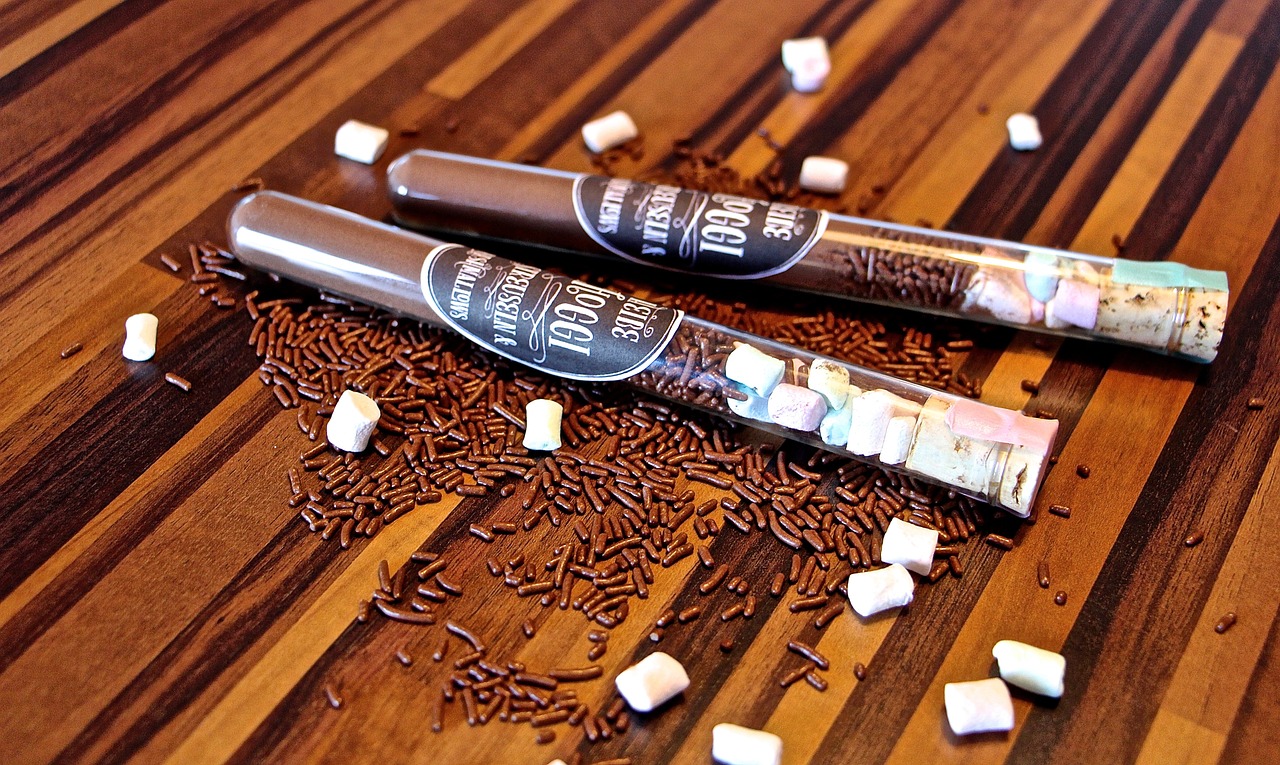
Cardboard Sea Creatures
Creating is not only an exciting way to engage kids in crafting, but it also opens a world of imagination and creativity. With just a few materials, children can dive into the depths of their creativity and bring to life a vibrant underwater world. All you need is some old cardboard, scissors, and a splash of paint to get started! Imagine transforming a simple cardboard box into a magnificent octopus or a playful dolphin. The possibilities are endless!
To begin, gather your materials. You'll need:
- Cardboard (from boxes, old packaging, etc.)
- Scissors
- Paint and brushes
- Markers
- Glue
- Googly eyes (optional for added fun)
Once you have your supplies ready, let’s walk through a simple project: making a colorful cardboard fish. Start by cutting out a fish shape from the cardboard. Kids can choose any size they like—big or small! Next, they can paint the fish in bright colors, adding patterns like stripes or spots using different brush techniques. This not only helps develop their fine motor skills but also allows for self-expression as they choose their colors and designs.
After the paint dries, kids can use markers to outline their fish and add fun details like fins and scales. For an extra touch, glue on some googly eyes to give it a lively look. This project is not just about crafting; it also sparks conversations about different types of fish and their habitats. Parents can encourage children to explore what colors and shapes are found in real fish, making it a dual learning experience!
Another fantastic idea is to create a cardboard jellyfish. To make this, cut a circle from the cardboard for the jellyfish's body and paint it in soft pastel colors. Then, cut strips of cardboard or crepe paper for the tentacles. Kids can get creative here, experimenting with lengths and colors to create a jellyfish that’s uniquely theirs. Once assembled, these jellyfish can hang from the ceiling, creating a beautiful underwater display in their room!
Crafting cardboard sea creatures is a wonderful way to recycle materials and teach children about the importance of environmental sustainability. As they create, parents can discuss the impact of plastic waste in oceans and how recycling can help protect marine life. This not only enriches the crafting experience but instills a sense of responsibility in young minds.
In conclusion, cardboard sea creatures are a fun, creative, and educational project for kids. They allow for artistic expression while promoting environmental awareness. So, gather your cardboard, unleash your creativity, and let the crafting adventure begin!
Q1: What age group is suitable for cardboard sea creature crafts?
A1: Cardboard crafts are suitable for a wide range of ages. Younger children may need assistance with cutting, while older kids can manage the entire project independently.
Q2: Can we use other materials besides cardboard?
A2: Absolutely! While cardboard is a great base, you can also use paper plates, egg cartons, or even plastic bottles to create sea creatures.
Q3: How can we incorporate learning into these crafts?
A3: While crafting, discuss marine biology, ocean habitats, and the importance of conservation. Kids can learn fun facts about the creatures they are making!
Q4: What should we do with the finished crafts?
A4: Finished crafts can be displayed at home, used for educational purposes, or even gifted to friends and family. They make great decorations for themed parties too!

Paper Crafts
When it comes to crafting aquatic animals, paper is a fantastic and versatile material that can spark creativity in kids of all ages. From colorful origami fish to delightful paper plate jellyfish, the possibilities are endless! Not only do these projects allow children to express their artistic flair, but they also help develop their fine motor skills and hand-eye coordination. Imagine the joy on their faces as they watch their creations come to life, transforming simple sheets of paper into vibrant representations of ocean life.
One of the best aspects of paper crafts is that they can be easily adapted to suit various skill levels. For younger children, projects like paper plate jellyfish are perfect. All you need are some paper plates, colorful streamers, and a little bit of creativity. Kids can paint the plates in bright colors and attach streamers to mimic the jellyfish's tentacles. It's a simple yet engaging way to introduce them to the wonders of marine life while honing their crafting skills.
For those looking for a bit more challenge, origami can be a thrilling adventure. Origami fish, for instance, can be made using just a square piece of paper and some folding techniques. This project not only teaches kids about the art of folding but also enhances their concentration and patience. Plus, they can decorate their origami creations with markers or stickers, making each fish unique and personal.
To make the crafting experience even more enriching, consider incorporating a few fun facts about the aquatic animals they are creating. For example, as kids fold their origami fish, you can tell them about the different types of fish found in the ocean, their habitats, and their roles in the ecosystem. This way, crafting becomes not just an artistic endeavor but also a learning experience that fosters a deeper appreciation for marine life.
Here’s a quick overview of some exciting paper craft ideas that can be explored:
| Craft Idea | Materials Needed | Skill Level |
|---|---|---|
| Paper Plate Jellyfish | Paper plates, streamers, paint, glue | Easy |
| Origami Fish | Square paper, markers | Intermediate |
| Paper Bag Octopus | Paper bags, scissors, markers | Easy |
Ultimately, paper crafts offer a wonderful way for kids to engage with the world of aquatic animals while developing essential skills. So, gather your supplies, unleash your imagination, and dive into the colorful universe of paper crafting!
- What age group are these paper crafts suitable for? Most of these crafts are suitable for children aged 4 and up, with some projects being easier for younger kids and others requiring more advanced skills.
- Can these crafts be done alone or do they require adult supervision? While many projects can be done independently, younger children may benefit from adult supervision, especially when using scissors or glue.
- Are these projects eco-friendly? Yes! Using recycled paper and materials helps promote environmental awareness while crafting.
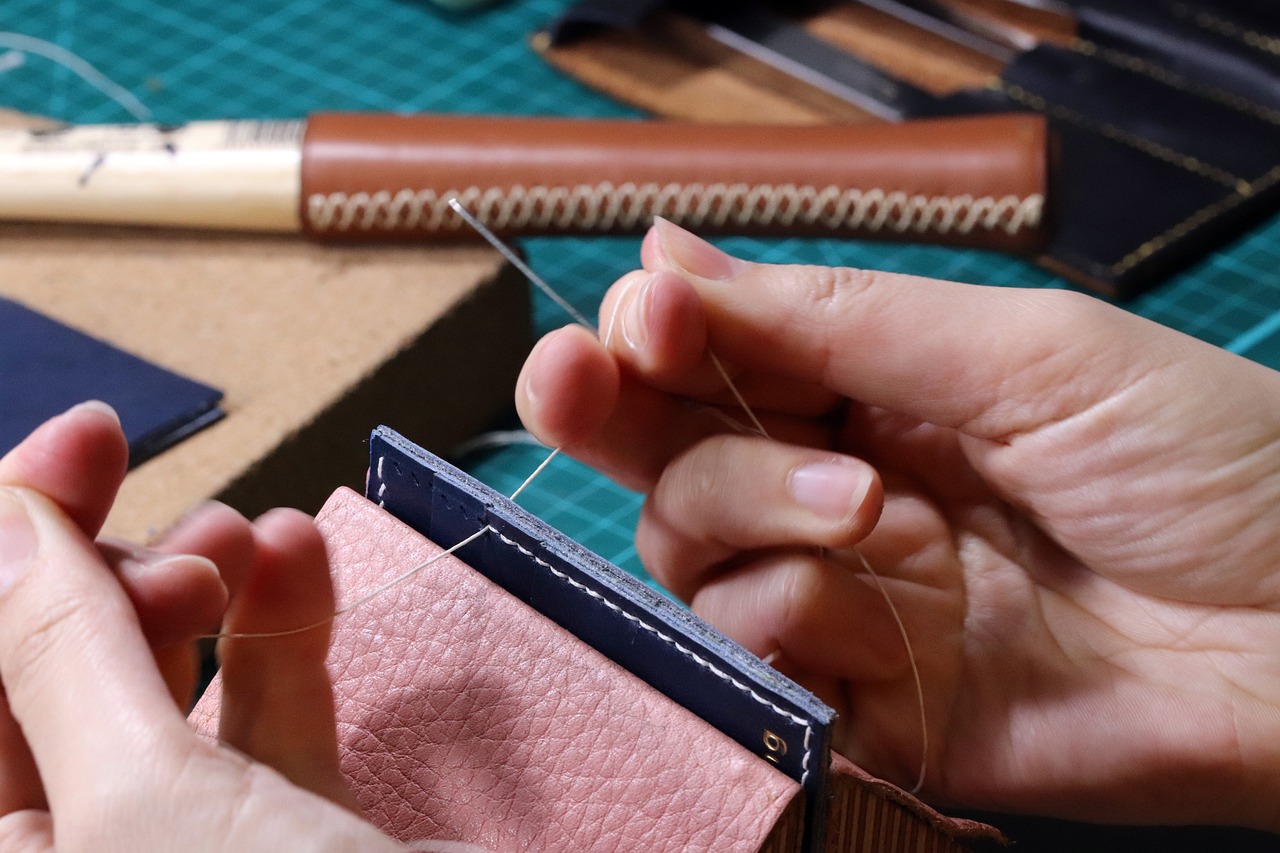
Incorporating Learning with Crafts
Crafting isn't just about creating beautiful pieces of art; it's also an incredible opportunity to incorporate learning into the mix! When kids engage in hands-on activities, they naturally absorb information in a way that feels fun and interactive. Imagine turning a simple craft session into an exciting lesson about marine biology or ocean conservation! By blending creativity with education, you can make the crafting experience not only enjoyable but also enriching.
One of the best ways to integrate learning is by discussing marine life while kids are busy cutting, gluing, and painting. For instance, while making a colorful paper plate jellyfish, you could share fascinating facts about jellyfish, such as their life cycle and the role they play in the ocean ecosystem. You might ask questions like, "Did you know that jellyfish have been around for over 500 million years?" This kind of engagement keeps their minds active and curious.
Additionally, you can create a thematic crafting day where each project corresponds to a different marine animal. This could be a fun way to explore various habitats, diets, and behaviors of these creatures. For example, while crafting a cardboard turtle, you can discuss the importance of sea turtles in marine ecosystems and the threats they face. This not only fosters creativity but also instills a sense of responsibility towards protecting these beautiful creatures.
To further enhance the learning experience, consider setting up a small marine life facts corner in your crafting area. You can display interesting facts about different aquatic animals, which can serve as inspiration for the kids' projects. Here’s a simple table to illustrate some marine animals and their unique traits:
| Marine Animal | Interesting Fact |
|---|---|
| Octopus | Octopuses have three hearts and blue blood! |
| Dolphin | Dolphins are known for their high intelligence and social behavior. |
| Seahorse | Male seahorses are the ones that get pregnant! |
| Clownfish | Clownfish have a symbiotic relationship with sea anemones. |
By creating a connection between crafting and learning, you can inspire kids to appreciate the beauty of marine life while also understanding the importance of conservation. Encourage them to ask questions and share their thoughts during the crafting process. This dialogue not only enhances their knowledge but also boosts their confidence as they express their ideas.
Incorporating lessons about ocean conservation is another vital aspect of this approach. As kids create their aquatic masterpieces, discuss the impact of pollution on marine life and the steps we can take to protect our oceans. You might ask, "What do you think happens to the fish when plastic ends up in the ocean?" This encourages critical thinking and helps them realize that their actions can make a difference.
Ultimately, crafting can serve as a bridge between creativity and education, allowing kids to explore the wonders of the ocean while honing their artistic skills. So, the next time you sit down for a crafting session, remember to weave in some learning—it's a splash of fun that can lead to a deeper understanding of the world around them!
- What age group is suitable for aquatic animal crafts? Aquatic animal crafts can be adapted for various age groups, but younger children (ages 4-8) may enjoy simpler projects, while older kids (ages 9-12) can tackle more complex creations.
- Can crafting be done alone or is it better in groups? Both options are great! Crafting alone allows for focused creativity, while group crafting encourages collaboration and social interaction.
- How can I make crafting more educational? Incorporate discussions about marine life, conservation, and environmental issues during the crafting process to enhance the educational experience.

Marine Life Facts
When kids dive into crafting aquatic animals, it's the perfect opportunity to sprinkle in some fascinating marine life facts that can make the experience even more enriching. Did you know that the ocean is home to more than 230,000 known species? And this number keeps growing as scientists continue to explore the depths of our seas. From the majestic blue whale, which can weigh as much as 24 elephants, to the tiny, vibrant clownfish, the diversity of marine life is nothing short of astounding.
One intriguing fact to share is that coral reefs are often referred to as the "rainforests of the sea." They support a vast array of marine species, providing habitat and food for countless organisms. In fact, these underwater ecosystems are home to approximately 25% of all marine life, despite covering less than 1% of the ocean floor! This is a great point to highlight while kids are crafting their own colorful coral or reef-themed projects.
As you guide the little ones in their crafting, you can also introduce them to some of the remarkable adaptations marine animals have developed to survive. For instance, the octopus can change its color and texture to blend in with its surroundings, a skill that serves as both camouflage and a way to communicate with other octopuses. Imagine how exciting it would be to create an octopus craft and then learn about its incredible abilities!
To make the learning experience even more interactive, consider creating a small table with some marine animals and their unique traits:
| Marine Animal | Unique Trait |
|---|---|
| Blue Whale | Largest animal on Earth |
| Clownfish | Lives among sea anemones |
| Octopus | Can change color and texture |
| Sea Turtle | Can hold its breath for hours |
These facts not only spark curiosity but also help children appreciate the beauty and complexity of marine ecosystems. By weaving in educational components, crafting becomes a multi-dimensional experience where kids can express their creativity while gaining knowledge about the world around them.
Encouraging discussions about marine life can also lead to deeper conversations about ocean conservation. For example, you might ask, "What do you think we can do to help protect these amazing creatures?" This not only teaches them about the importance of preserving marine habitats but also empowers them to take action, even in small ways, like recycling materials for their crafts.
Q: What age group is suitable for these aquatic animal crafts?
A: These crafts are suitable for children aged 4 and up, with varying complexity to accommodate different skill levels.
Q: Are the materials used in these crafts safe for kids?
A: Yes, most materials like paper, cardboard, and non-toxic paints are safe for children. Always supervise younger kids with scissors and glue.
Q: Can these crafts be used for educational purposes?
A: Absolutely! Incorporating marine life facts and environmental awareness into the crafting process makes it a fun and educational experience.
Q: How can I display my child's finished crafts?
A: You can create a dedicated art wall or use a bulletin board at home or in the classroom to showcase their aquatic creations!
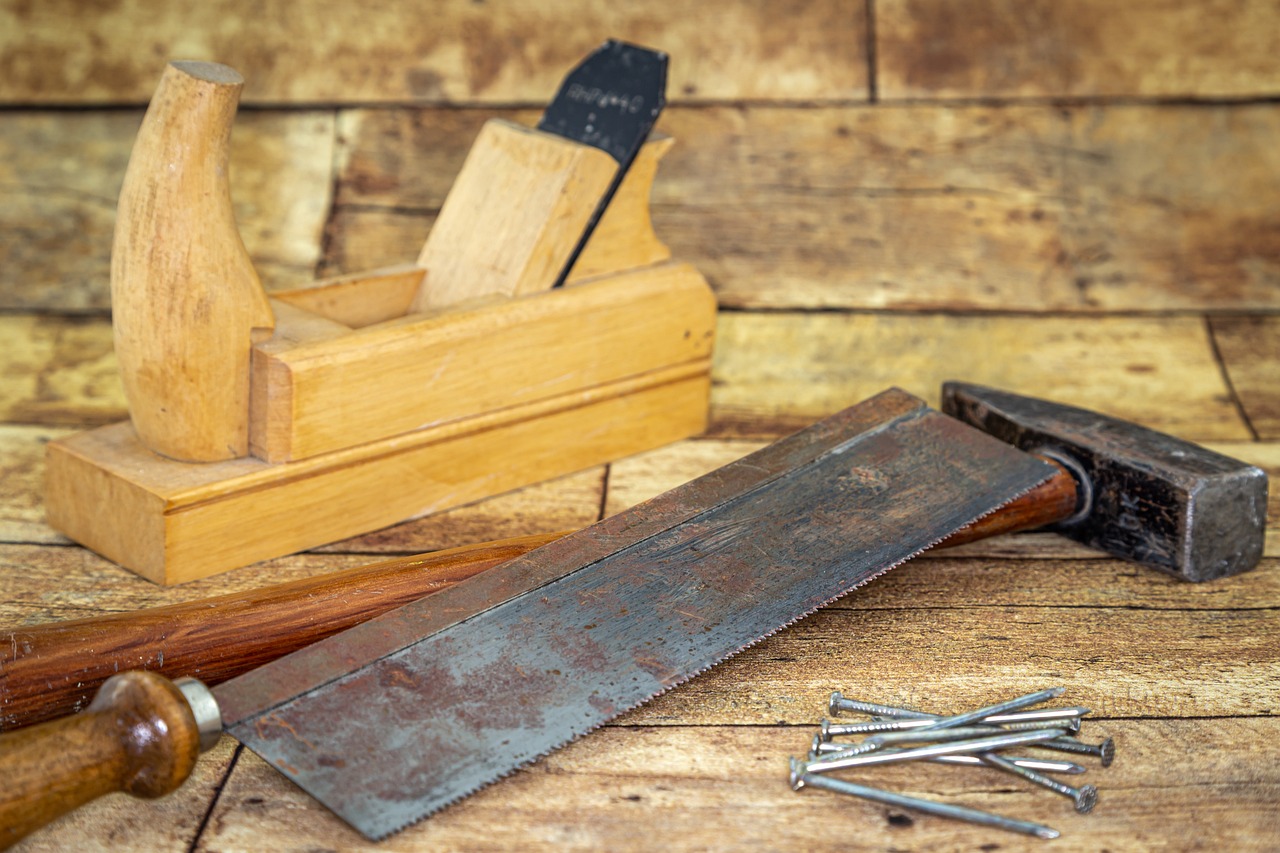
Environmental Awareness
Teaching children about through crafting is not just a fun activity; it’s a vital lesson that can shape their understanding of the world around them. When kids engage in crafting projects that utilize recycled materials, they learn the importance of sustainability and conservation in a hands-on way. For instance, using plastic bottles to create colorful fish not only sparks their creativity but also opens up discussions about the impact of plastic waste on our oceans. Have you ever thought about how much plastic we throw away each day? By transforming these items into art, children can see firsthand how they can contribute to reducing waste.
Moreover, integrating lessons about marine conservation into crafting sessions can be incredibly enriching. As children cut, paint, and glue, you can share fascinating facts about the ocean and its inhabitants. For example, did you know that over 800 species of marine life are threatened by pollution? This kind of information can resonate with kids, making them more aware of their role in protecting the environment. It’s like planting a seed of responsibility in their minds, which can grow into a lifelong commitment to caring for our planet.
To effectively incorporate these lessons, consider discussing the following topics while crafting:
- The importance of reducing plastic use: Explain how single-use plastics can harm marine life and what alternatives exist.
- Ocean conservation efforts: Share stories of organizations working to protect marine habitats and how kids can get involved.
- Simple actions for a cleaner ocean: Encourage kids to think of ways they can help, like participating in beach clean-ups or recycling at home.
By weaving these discussions into your crafting sessions, you not only create beautiful art but also foster a sense of environmental stewardship in your children. They’ll walk away not just with a crafted piece but with a deeper understanding of the importance of protecting our oceans. After all, crafting is more than just making things; it's about making a difference!
In addition, consider creating a display area for their finished crafts that includes information about the marine animals they’ve created. This can serve as a constant reminder of the lessons learned and inspire ongoing conversations about environmental responsibility. It’s a way to celebrate their creativity while reinforcing the importance of caring for our planet.
Ultimately, crafting can be a powerful tool for teaching kids about the environment. By combining creativity with education, we can help nurture a generation that values and protects our precious marine ecosystems.
Q: How can I make crafting more educational for my kids?
A: Incorporate discussions about marine life, environmental issues, and conservation techniques while crafting. Use the opportunity to share interesting facts and encourage questions.
Q: What materials are best for eco-friendly crafts?
A: Recycled materials like plastic bottles, cardboard, old magazines, and fabric scraps are excellent choices. These not only reduce waste but also inspire creativity.
Q: How can I encourage my kids to care about the environment?
A: Lead by example! Participate in clean-up events, create crafts from recycled materials, and discuss the importance of sustainability regularly.
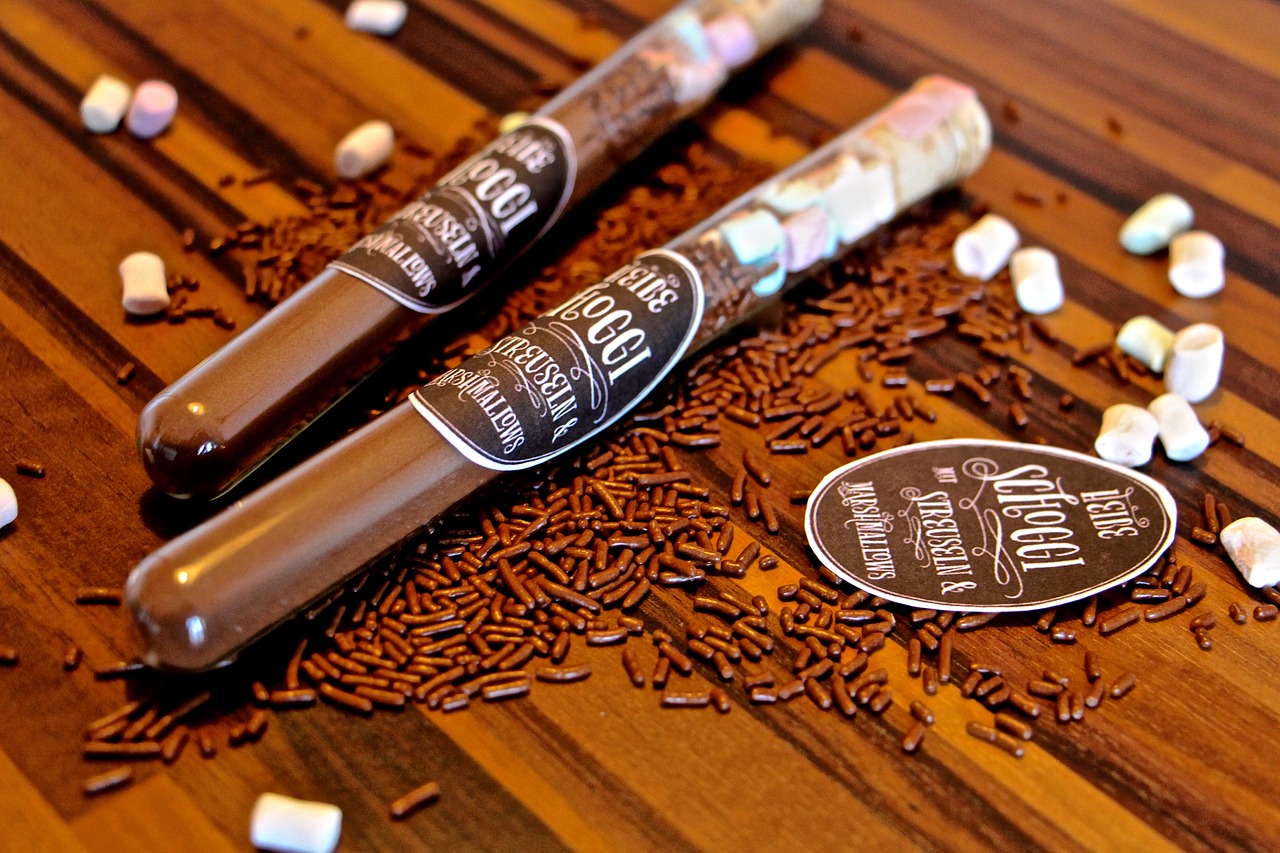
Showcasing Finished Crafts
Once your kids have poured their creativity into crafting delightful aquatic animals, it's time to showcase their hard work! Displaying their finished crafts not only boosts their confidence but also allows them to share their artistic achievements with family and friends. There are numerous creative ways to exhibit these unique creations that can turn any space into a vibrant underwater gallery.
One of the simplest yet most effective methods is to create a dedicated craft corner in your home. This could be a wall or a bulletin board where kids can pin their artworks. Using colorful string or yarn, hang their crafts like a mobile, creating an enchanting underwater scene that dances with the breeze. Imagine a school of paper fish swimming through the air, bringing a splash of color to any room!
Another fun idea is to organize a mini art exhibit at home. Invite family and friends over for a "gallery opening" where your kids can proudly present their aquatic masterpieces. You can even create little name tags for each piece, adding an air of professionalism to the event. This not only makes the kids feel special but also encourages them to talk about their creations and the crafting process, enhancing their communication skills.
If you're looking for a more permanent display, consider creating a craft scrapbook. Take photos of their projects and have your kids write a short description of each craft, including what materials were used and what inspired them. This not only preserves their memories but also serves as a wonderful keepsake that they can look back on in the future.
For those who want to add a touch of technology, why not create a digital gallery? Take high-quality photos of their crafts and compile them into a slideshow or a dedicated social media page. This way, family members who live far away can also appreciate their creativity. Plus, it’s a fun way for kids to learn about digital presentation and sharing their work with a wider audience.
Lastly, consider donating some of their crafts to local schools or community centers. Many organizations love to showcase children's artwork, and this act of sharing can teach kids the value of giving back to the community. It’s a beautiful way to promote their creativity while also spreading joy to others.
In summary, showcasing finished crafts is more than just displaying art; it’s about celebrating creativity, building confidence, and fostering a sense of community. Whether it’s through a physical display at home, a digital gallery, or a charitable donation, there are countless ways to highlight the hard work and imagination that your kids have poured into their aquatic animal crafts.
- What materials are best for crafting aquatic animals?
Common materials include paper, cardboard, plastic bottles, and recycled items. Paint, glue, and scissors are also essential for creating and decorating your crafts.
- How can I help my child if they are struggling with a craft?
Encourage them by offering assistance or suggesting alternative methods. Sometimes, just providing a little inspiration or a new idea can spark their creativity!
- Can crafting be educational?
Absolutely! Crafts can integrate lessons about marine biology and environmental conservation, making the crafting experience both fun and informative.
Frequently Asked Questions
- What age group is suitable for these aquatic animal crafts?
These crafts are designed for kids aged 4 and up! Younger children may need some help from adults, but they can still enjoy the fun of crafting. It's all about getting creative, so feel free to adjust the activities based on your child's skill level!
- Do I need to buy special materials for these projects?
Nope! Most of the materials you need can be found around your home. Items like paper, cardboard, and plastic bottles are perfect for these crafts. Plus, using recycled materials makes the crafting experience even more eco-friendly!
- How can I incorporate learning into these crafts?
Great question! While crafting, you can share interesting facts about marine life. For example, when making a fish, discuss its habitat or diet. This way, crafting becomes an educational adventure, blending creativity with learning!
- Can these crafts help my child with their fine motor skills?
Absolutely! Cutting, gluing, and painting all require fine motor skills. As your child engages in these activities, they'll be improving their hand-eye coordination and dexterity without even realizing it. It's like sneaking in some skill-building while having fun!
- What if my child wants to make a specific marine animal?
That's the beauty of crafting! Encourage your child to use their imagination. If they want to create a dolphin or a sea turtle, help them brainstorm how to do it with the materials you have. Crafting is all about creativity, so let them lead the way!
- How can we display the finished crafts?
There are so many fun ways to showcase your child's creations! Consider creating a mini art gallery at home by hanging their crafts on a wall or using a shelf. You can even take photos and make a scrapbook to remember their artistic journey!
- Are there any safety tips for crafting with kids?
Definitely! Always supervise young children, especially when using scissors or glue. Make sure to use non-toxic materials and keep small items out of reach to prevent choking hazards. Safety first, but don’t forget to have fun!



















